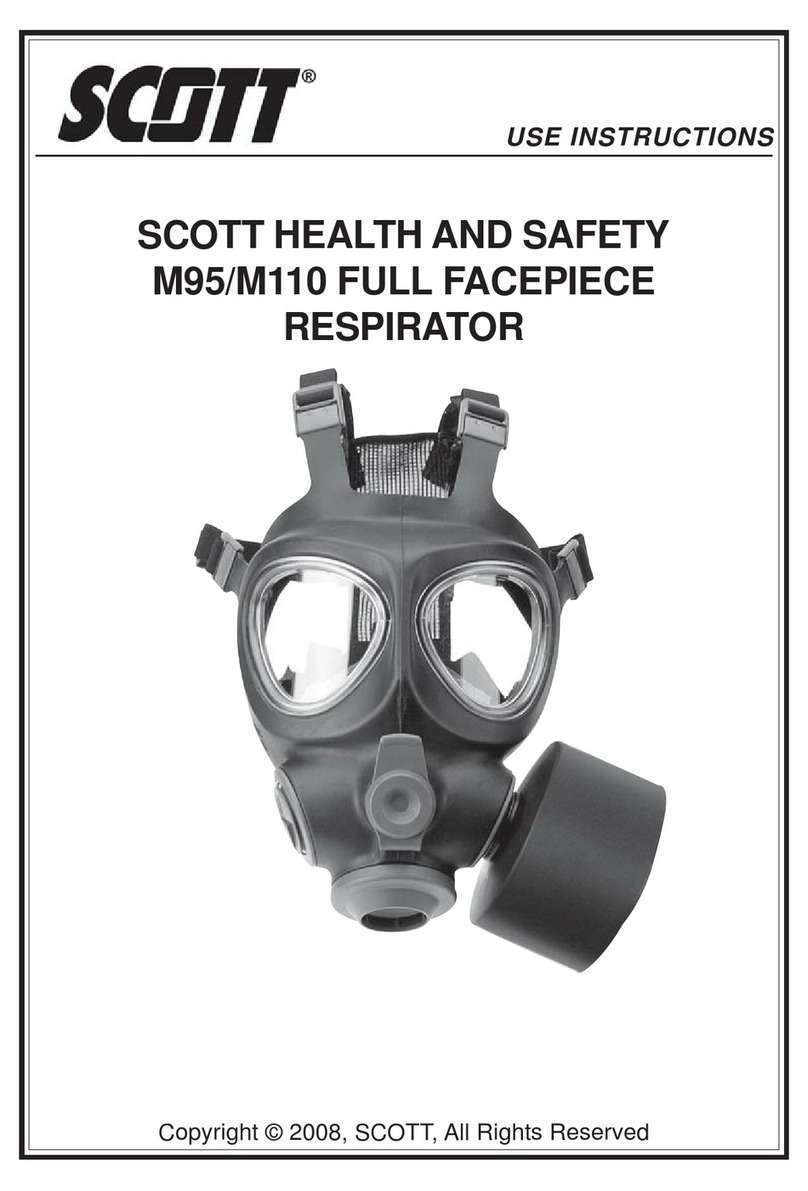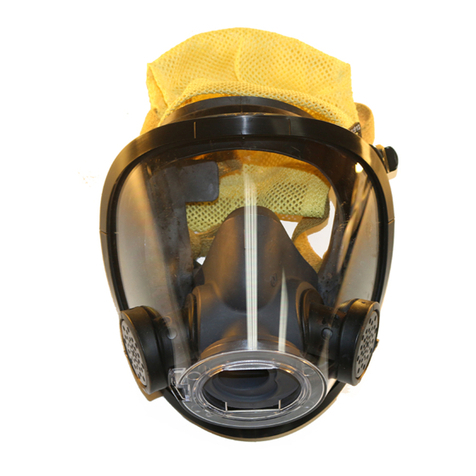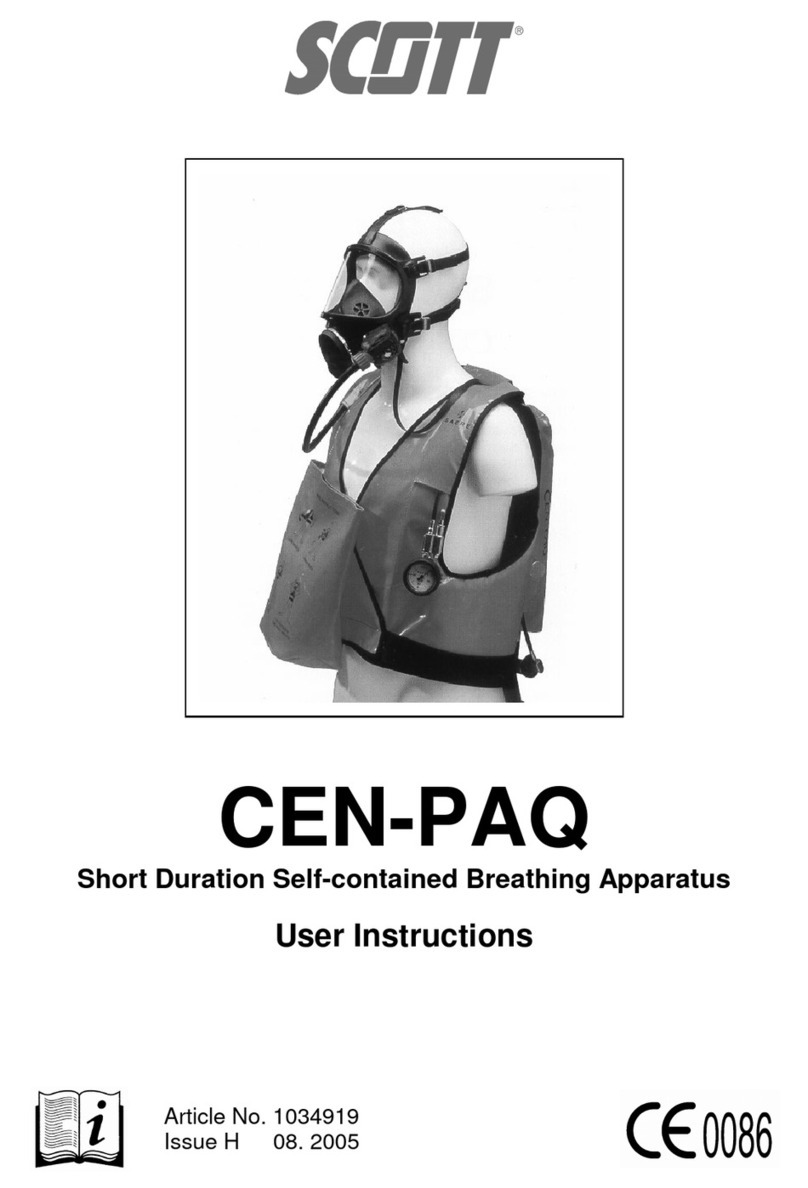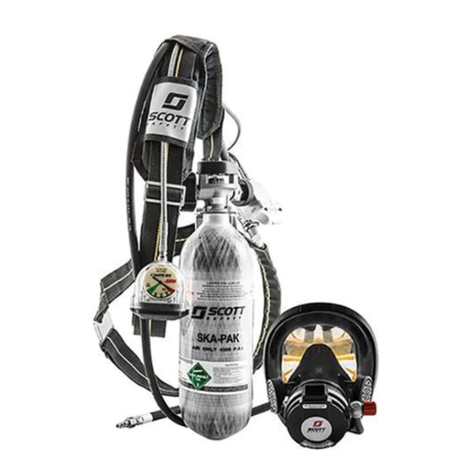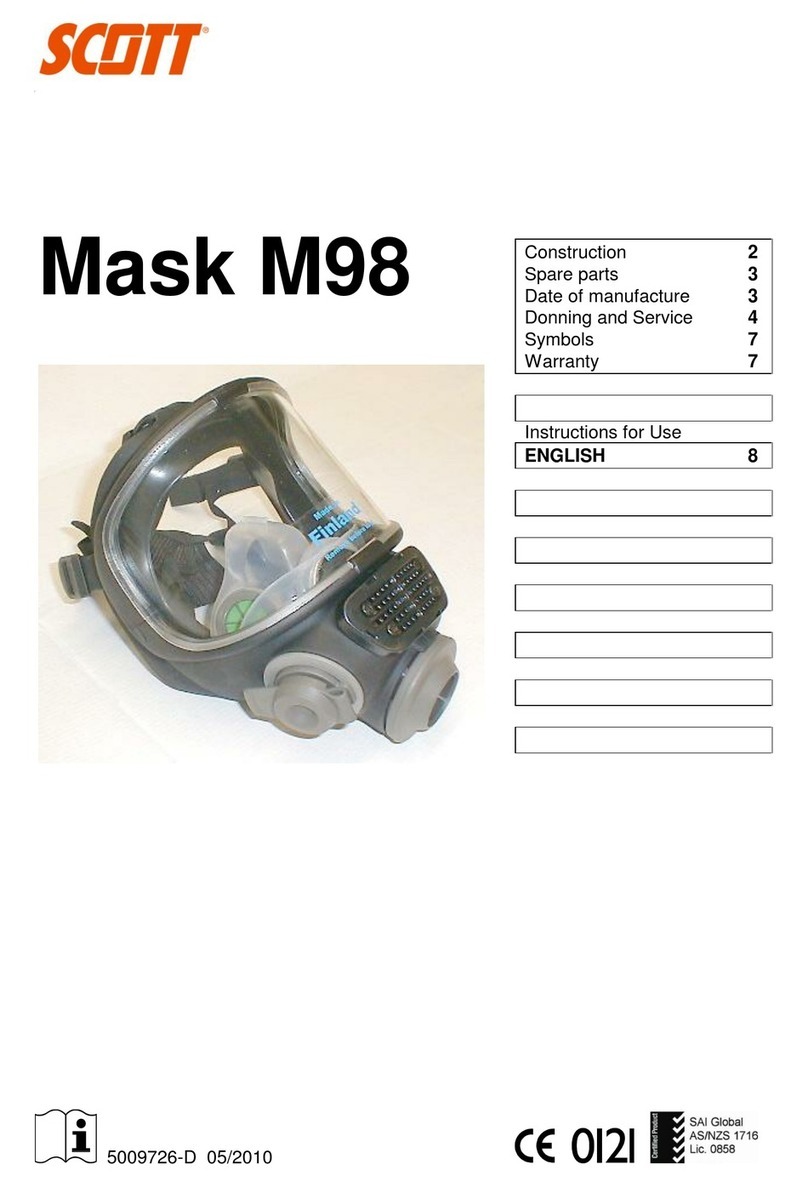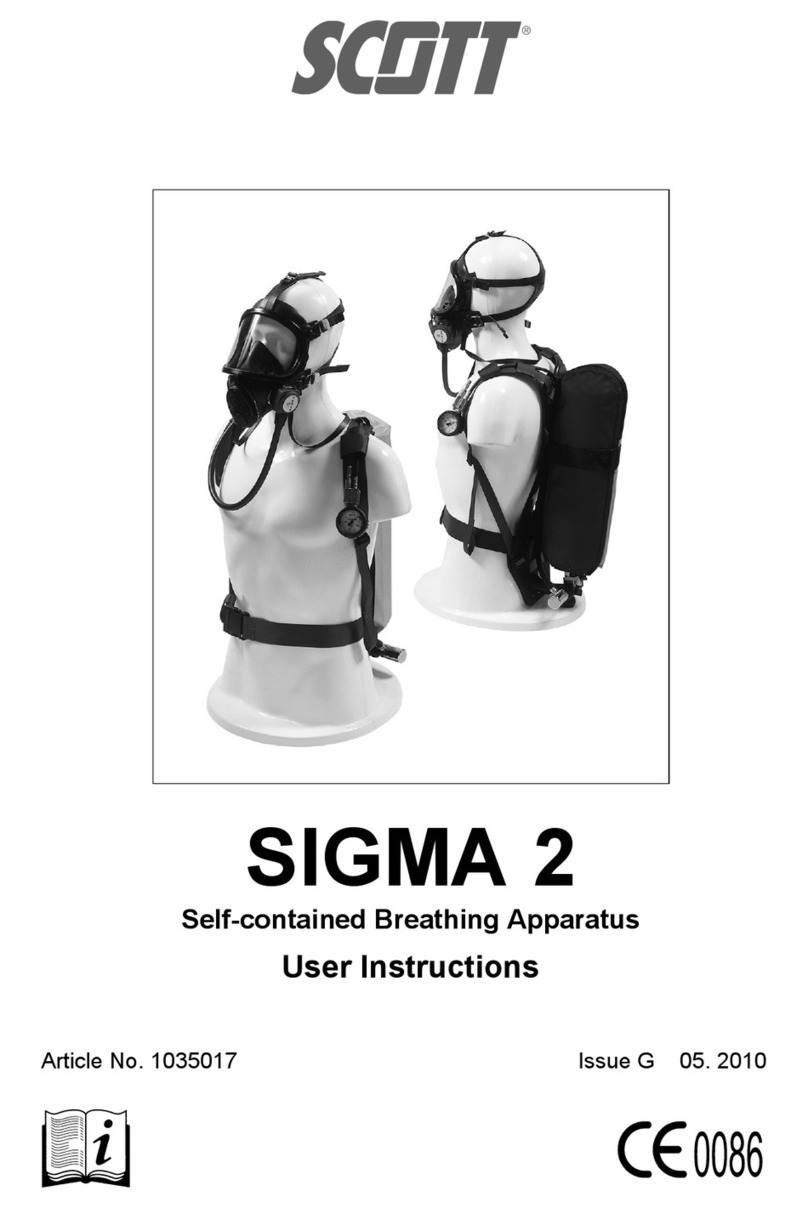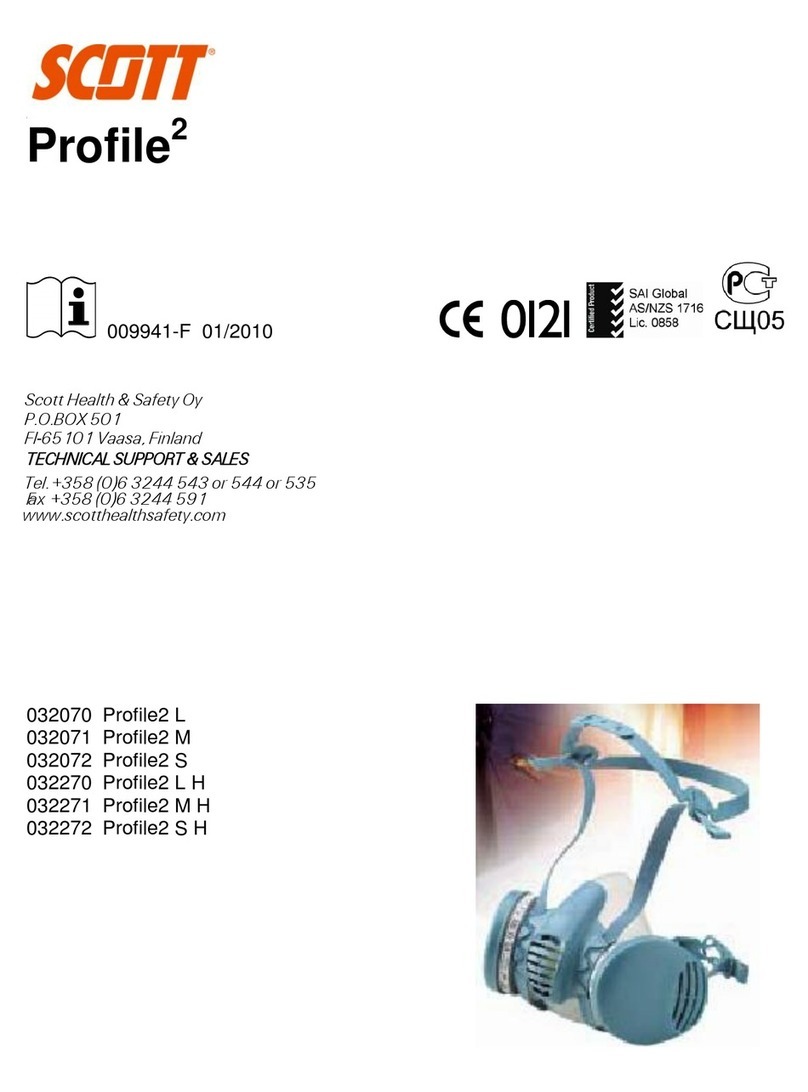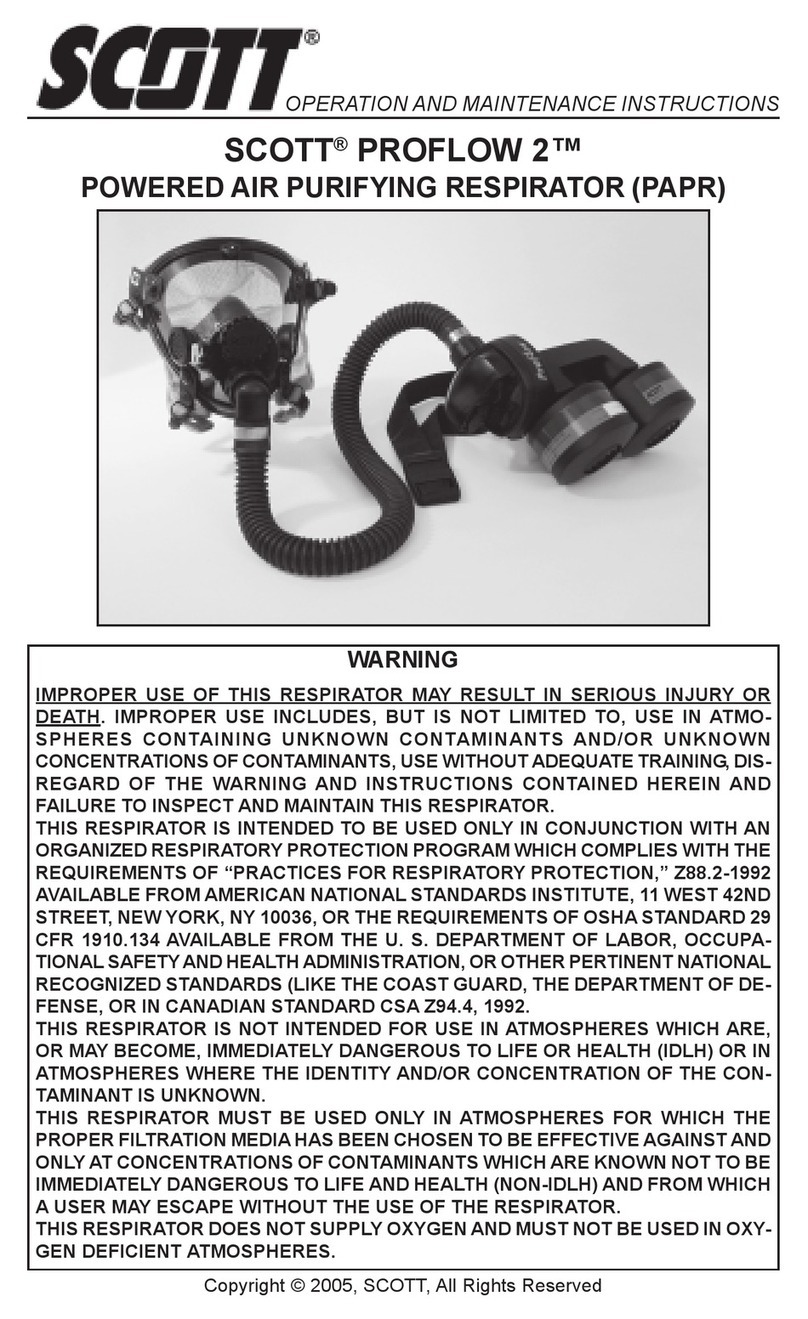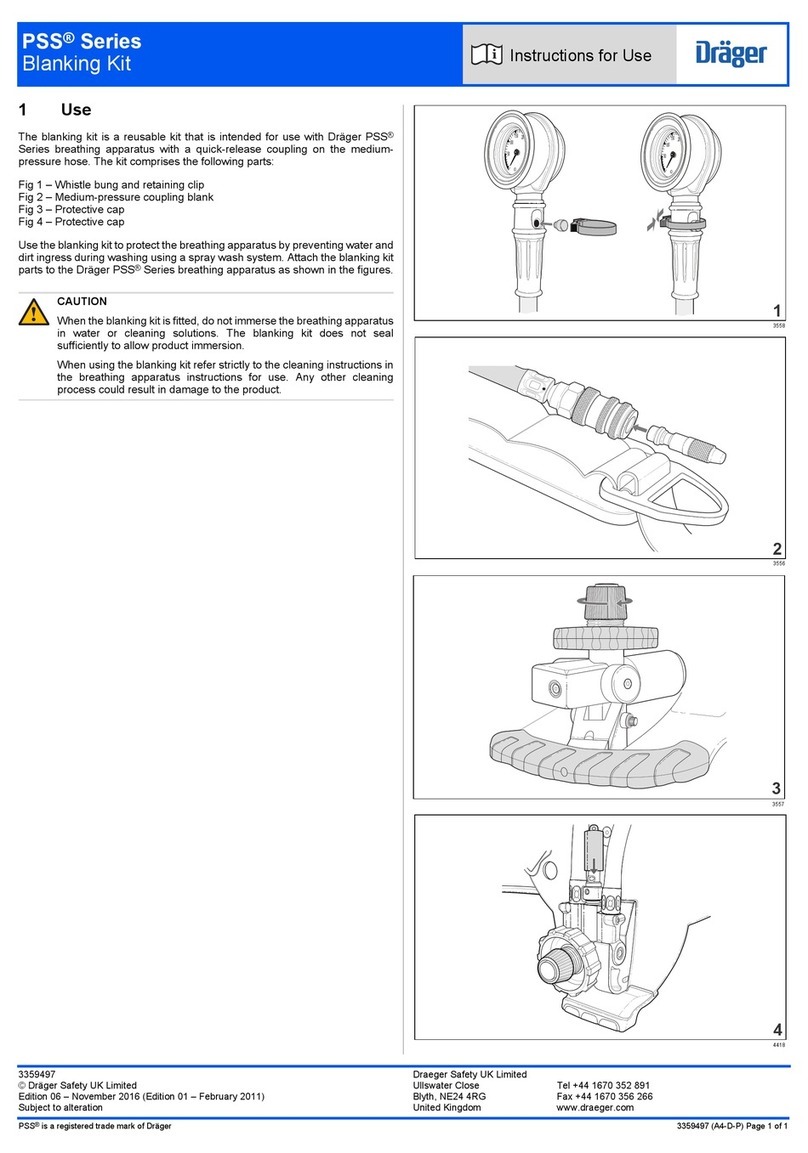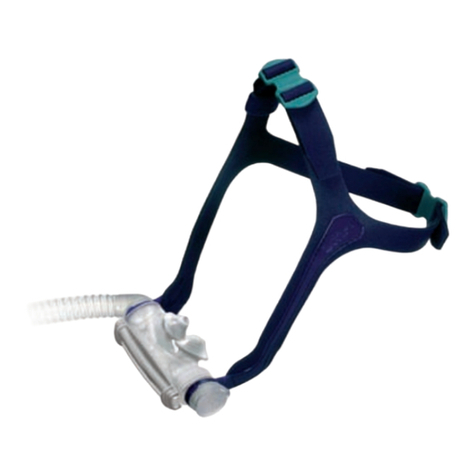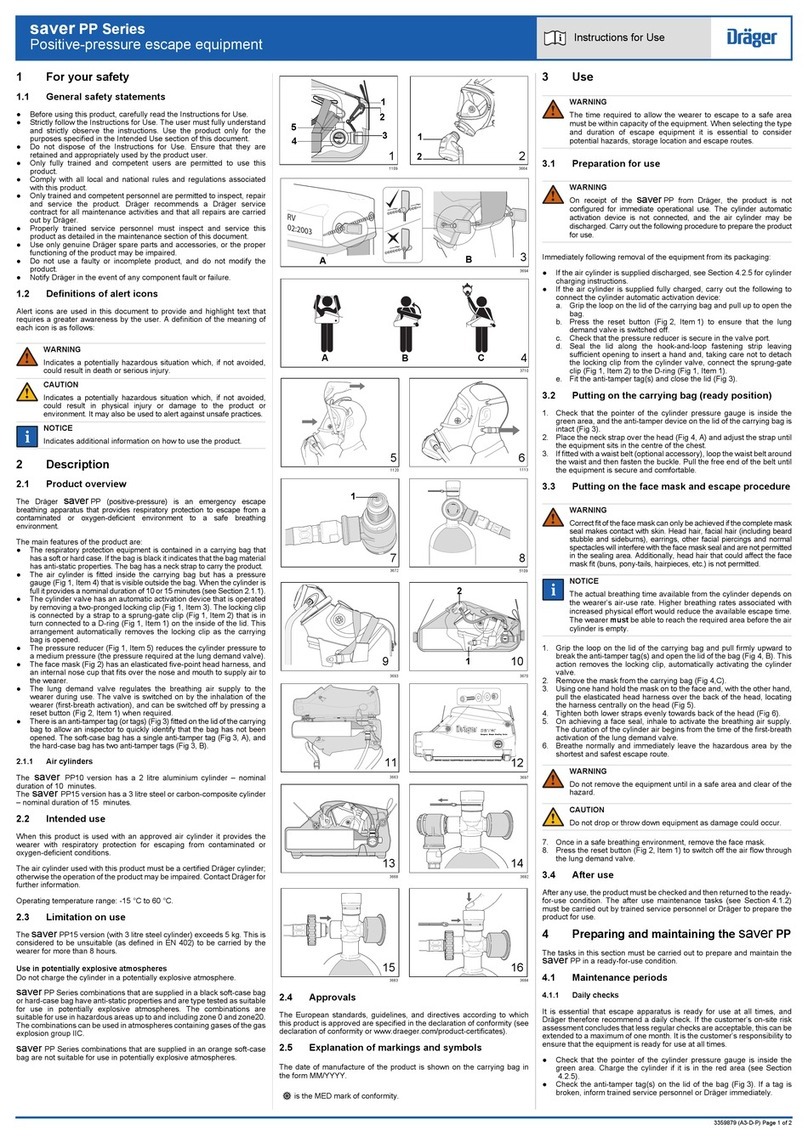
10
Full face mask ENGLISH
Promask
+ filter Pro2000
+ blower device Autoflow, Proflow
012681 Promask black
012670 Promask S (small) black
012882 Promask SIL yellow
Promask2
+ 2 x filter Pro2
012890 Promask2SIL grey
The Promask has been designed to conform with EN 136/12942 (Europe) and AS/NZS 1716:2003
(Australia/NZ). EC certified by BGIA (Berufsgenossenschaftliches Institut für Arbeitssicherheit), DE-53754
Sankt Augustin, Germany, ID: 0121. Licence 0858 by SAI Global, Australia.
1. General
The Promask is designed to protect the respiratory system and face against hazardous gases and
particles.
The filter is selected according to the type of hazard present.
Promask
oUse as filter mask together with a Pro2000 filter (gas, particle or combined filters). The filters are
thread filters conforming to the European standard EN 148-1.
oUse with a blower device, with the filters fitted to the blower device.
oMaterial: Mask made of butyl-EPDM (Procomp) or silicone. Inner mask made of TPE or silicone.
Promask2
oUse as filter mask together with Pro2filters (2 pcs, bayonet connection).
oMaterial silicone.
2. Limitations of use
2.1 The filtering device must not be used if the environment and contamination is unknown. In case of
doubt, isolating respirators (air supply) which function independently of the atmosphere must be
used.
2.2 The filtering device must not be used in confined spaces (e.g. cisterns, tanks) because of the risk of
oxygen deficiency or presence of heavy oxygen-displacing gases (e.g. carbon dioxide).
2.3 The filtering device may be used only if the oxygen content of the air is 18–23 vol.%.
2.4 Gas filters do not protect against particles. Similarly, particle filters do not provide protection against
gases or vapours. In case of doubt, use combined filters.
2.5 Normal filtering devices do not protect against certain gases such as CO (carbon monoxide), CO2
(carbon dioxide) and N2(nitrogen).
2.6 Particle filters are only allowed for single use if they are applied against radioactive agents or micro-
organisms (virus, bacteria, fungi and spores).
2.7 It is likely that adequate protection cannot be guaranteed if the user’s beard, hair, spectacle frames
or clothing intrude into the faceseal. With the Promask one can use special spectacles (see 012790
spectacle frame).
2.8 When a breathing protector is used in explosive atmospheres, please follow the instructions given
for such areas.
2.9 Gas filters shall be replaced when the user begins to sense odour, taste or irritation. Filters used
against detrimental gases that do not display any significant indications, require special regulations
for the duration of use and correct usage.
Particle filters must be replaced at the latest when breathing resistance becomes too high.
2.10 The weight of filter used with a full face mask shall not exceed 500 g.
The Promask is used with one filter only (the other opening on the mask is blocked by the
manufacturer).
The Promask2is used with Pro2filters. Always use two filters of the same type and class, always
replace both filters at the same time.
With a blower device
2.11 The blower must be running while using the respirator. If the blower turns off by accident, the
device ceases to function as a respirator, and carbon dioxide levels may instantly rise. This is
considered an exceptional situation.
2.12 At a very intense working pace, the pressure in the facepiece can change into negative pressure at
peak inhalation.
2.13 Protection levels may be reduced if wind speed exceeds 2 m/s.
2.14 Filters must not be fitted directly to the breathing hose.
